European Championship Stadiums & Stats
 The European Championships began in 1958 as a competition between 17 members of UEFA. The initial tournament took place over 22 months with 17 teams whittled down to a final four who then competed in a knockout for the trophy in France in 1960. The European Championships was actually a late comer compared to other continental championships but over the years has risen to perhaps the biggest national football championship outside of the World Cup.
The European Championships began in 1958 as a competition between 17 members of UEFA. The initial tournament took place over 22 months with 17 teams whittled down to a final four who then competed in a knockout for the trophy in France in 1960. The European Championships was actually a late comer compared to other continental championships but over the years has risen to perhaps the biggest national football championship outside of the World Cup.
The first European crown was won by the then Soviet Union who beat Yugoslavia 2-1 at Paris Saint Germain’s Parc de Princes in 1960 in front of 18,000 people. Euro 2028 represents the 18th incarnation of the tournament that has been won by 10 different nations. For 2028 the tournament will go back to multiple countries, this time it will be a home nation event hosted by England, Ireland, Scotland, Wales and Northern Ireland.
This will see ten stadiums used including national stadiums in all nations; Wembley (final venue), Aviva Stadium, Principality Stadium, Casement Park and Hampden Park as well as classic stadiums such as Villa Park and brand new stadiums such as Everton’s new ground. It will be the third time that England has hosted or co-hosted the Championships, second time for Scotland and the first time for the other home nations and Ireland.
On this page you will find full guides and statistics about all Euro 2028 stadiums that are due to be used in the next tournament. We’ll also have full fixture listings for all finals matches, history, format, statistics and more. Click any stadium to see the full stadium page see below the table for summaries of all the stadiums.
In 2032 the Euros will held across Italy and Turkey.
European Championship Stadiums
| Stadium | Matches | Group | Highest Stage | Capacity |
|---|---|---|---|---|
| Aviva Stadium | 4 | E | Last 16 | 51700 |
| Hampden Park | 4 | D | Last 16 | 51866 |
| St James Park | 8219 | |||
| The Etihad | 55000 | |||
| The Principality Stadium | 74500 | |||
| Tottenham Hotspur Stadium | 62850 | |||
| Villa Park | 42640 | |||
| Wembley | 7 | D | Final | 90000 |
Future Rounds
| Fixture | Date & Time | City/Stadium | ||
|---|---|---|---|---|
 ? ? | v |  ? ? | Sun 9th July | London Wembley |
Euro 2028 Stadiums

For England fans of a certain age, there is no finer tournament to look back on than Euro ’96. At the time, Three Lions wasn’t the ubiquitous song that it is nowadays, having only just been recorded by Baddiel, Skinner and the Lightning Seeds. The idea of ‘football coming home’ was as much to do with England hosting the tournament as the likelihood of the national side winning the thing. Fast forward 32 years and England will once again play host to a Euros, but this time mixing English venues in with those in Scotland, Wales, Northern Ireland and the Republic of Ireland. It means that English arrogance can’t entirely dominate proceedings, though don’t be surprised if there’s still a sense that England is hosting with the others helping out.
After all, it will be the third time that England has hosted matches for the competition after Euro ’96 and the pan-European tournament that saw the final played at Wembley. It will be the second time that Scotland will have hosted Euro matches, meanwhile, having welcoming four ties during the 2020 version of the competition. The good news is that, unlike when Qatar was named as the host country for the World Cup in 2022 and needed to build entirely new stadiums from the ground up, the majority of the venues that will host matches at Euro 2028 are already standing and ready to do so. The five countries didn’t exactly ‘win’ the bid as much as they stumbled into it, with Russia being ineligible and Turkey withdrawing.
Stadium Details
After the success of Euro 2024 in Germany, there will no doubt be a desire from the English, Scottish, Welsh, Irish and Northern Irish hosts of the competition four years later to do things as well as possible. For teams and supporters that will mostly be on the mainland, travel shouldn’t be too much of an issue; even if our continental counterparts are likely to be shocked by how much British people accept paying for train travel. That being said, the majority of host cities already have a good infrastructure in place to welcome tens of thousands of football fans along to watch the matches being played out in stadiums built for the purpose.
In fact, the majority of the stadiums that were used to win the bid have either hosted UEFA competitions in the past or else are well-placed to be able to do so. Even Everton Stadium, which will be alien to the concept of hosting European matches, is in a city that regularly plays host to European visitors thanks to the success of Liverpool and the club’s Anfield Stadium. Interestingly, Anfield is missing from the list of host venues on account of the fact that the pitch dimensions there fall short of UEFA’s requirements for a European Championship location, whilst Manchester United were unable to guarantee that Old Trafford would be ready in time to host matches.
The importance of football in all of the countries that have jointly won the bid to host Euro 2028 varies slightly from place to place. It is the national sport of England, so obviously the English are ready to welcome their European counterparts even if Brexit might not make them feel overly welcome, whilst it is a not dissimilar story in Scotland. For Wales and the Republic of Ireland there is more of a sense that rugby is the major sporting love. In Northern Ireland, meanwhile, Gaelic Games will usually sit at the top of the country’s list of interests on the sporting front. All five do enjoy football, though, which is why the won the bid in the first place.
Wembley – London
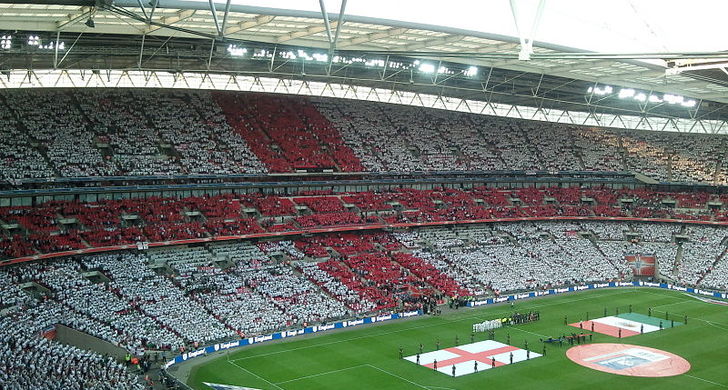
Wembley Stadium, sometimes referred to as ‘New Wembley’ in order to differentiate it from the Wembley Stadium that it replaced, is one of the most expensive stadia built anywhere in the world. It end up costing around £798 million in 2007, with the money helping to construct a venue with the largest roof-covered seating capacity on the planet. It boasts a bowl design, whilst the sliding roof doesn’t completed close but does come across enough to protect supporters from the elements if needed. The most notable feature of Wembley is the lattice arch, which spans 315 metres and an internal diameter of seven metres. Built 22 degrees of ‘true’ and going as high as 133 metres, it is able to support all of the weight of the north roof and about 60% of the weight of the retractable roof that is based on the south side of the stadium.
It is fair to say that Wembley is used to hosting major football matches. As well as being the location for England games, it is also where the FA Cup semi-finals and finals are held at the end of each season. The Women’s FA Cup final is also played there, alongside the likes of the Championship Play-Offs Final and the finals of the other Football League system division play-offs. It hosted the final and two semi-finals of the European Championship 2020, plus the final of the Women’s Euros in 2022. When London hosted the Olympic Games in 2012, Wembley Stadium was where the gold-medal match was played. Other sports have also been hosted by Wembley, including National Football League games and the Rugby Football League’s Challenge Cup. When White Hart Lane was demolished to make way for a new stadium, Tottenham Hotspur played their Premier League matches at Wembley.
Millennium Stadium – Cardiff
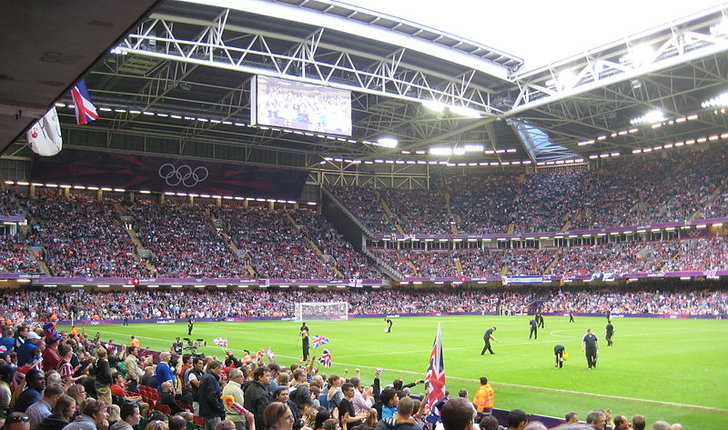
The national stadium of Wales is located in Cardiff, close to the city centre. It was initially built in order to play host to the 1999 Rugby World Cup, replacing the country’s National Stadium, which tells you something about its design. Although it was built as a rugby venue and has hosted countless rugby union games over the years, it has also seen its fair share of football matches. Whether it be the Welsh national side playing international games there or the FA Cup and League Cup finals that were played on the Millennium Stadium pitch when the old Wembley Stadium was demolished and the new ones being built, the Welsh know how to host important games. One of those was the FA Cup final in which Arsenal dominated Liverpool, only for a Michael Owen brace to see the Reds win 2-1 at the game’s death.
It is regularly used to host Six Nations Championship matches, so it is used to welcoming in supporters from different European countries, being the third-largest stadium used in the competition behind Twickenham and the Stade de France. Located next to the River Taff, the Millennium Stadium became officially known as the Principality Stadium in the January of 2016 thanks to a ten-year sponsorship deal with the Principality Building Society. There is a retractable roof on the stadium, making it the largest football stadium in the world with the feature. If special events are held then addition seating can be added, such as when the New Zealand All Blacks turned up for a rugby Test match. The pitch features built-in irrigation and draining. In the bars of the ground there are so-called ‘joy machines’, named because they can pint 12 points in under 20 seconds.
Tottenham Hotspur Stadium – London
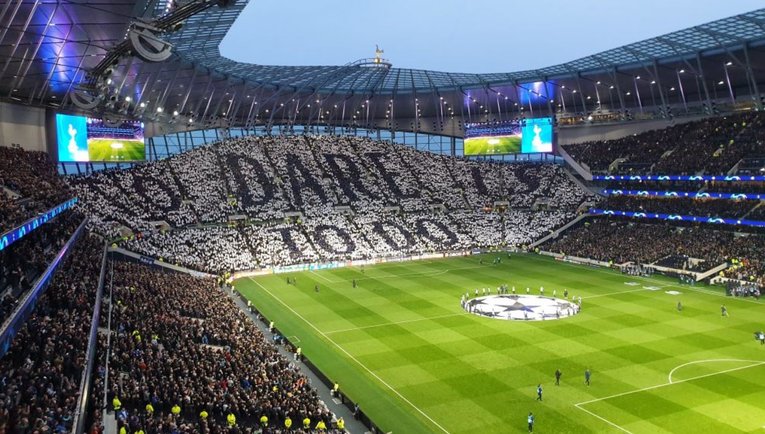
This is one of the newest stadiums on the list of host venues for Euro 2028, having only opened its doors for the first time in 2019. It was intended to be the catalyst for the entire regeneration of the Tottenham area of North London and the club’s supporters enjoy being able to get one over on Arsenal fans regarding this being the ground chosen for the Euros. When it was first opened, ‘Tottenham Hotspur Stadium’ was intended to be a temporary name before a sponsorship deal could be signed to give it a different one. That hasn’t happened at the time of writing, although some people refer to it as ‘New White Hart Lane’. Even if a sponsorship deal is signed ahead of Euro 2028, though, it will still be called the Tottenham Hotspur Stadium for the duration of the competition, which is thanks to UEFA’s rules around sponsorship in general.
As well as hosting countless Tottenham matches in the likes of the Premier League and the Champions League, the venue has also welcomed tens of thousands of people through its doors as the home of the National Football League in the United Kingdom. In other words, there is a reason why the bid put forward the ground as one of the venues for the Euros, given it knows exactly how to host major events. It boasts the first dividable, retractable football pitch in the world, revealing the synthetic pitch for NFL games underneath. The asymmetric bowl shape was designed in order to maximise the hospitality facilities in the ground, with nine floors in the northern section and five in the south. The unquestionable standout point of the stadium is the South Stand, which has a single tier with 17,500 seats; the largest single-tier in the UK.
City of Manchester Stadium – Manchester
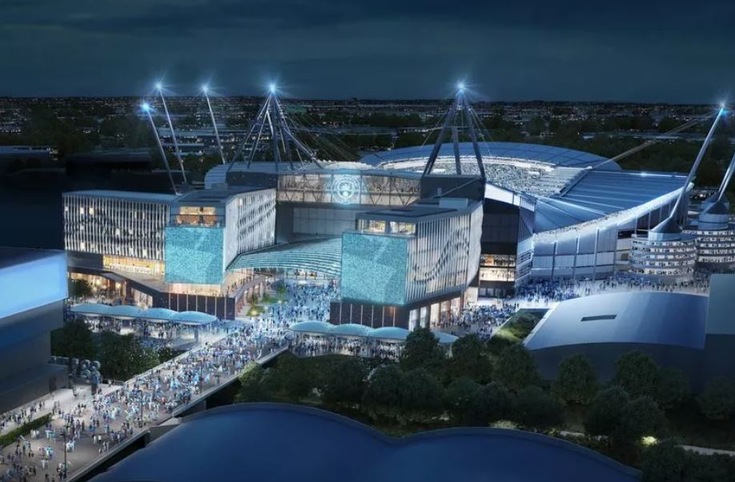
When the stadium was first built, it was done so in order to host the Commonwealth Games in 2002. It had been proposed initially when Manchester wanted to bid for the Summer Olympics in 2000, then after the Commonwealth Games concluded it was converted from a 38,000 athletics venue to a 48,000-seat football ground. That conversation cost Manchester City Council around £22 million, with Manchester City paying an additional £20 million in order to add extra seating. Man City moved there from Maine Road in the summer of 2003, with a £300 million redevelopment proposed for the North Stand commencing in 2023 with a completion date of 2026. It will see a covered fan park as well as a 400-room hotel added, alongside an increase in capacity to 61,474. That will make it one of the biggest stadiums used at Euro 2028.
There is something quite fitting about the ground being used as a European Championship venue, given that a new stadium had been planned in Manchester for a different continental tournament in the form of the 1996 Summer Olympics. This bid was then moved to 2000 before being abandoned in favour of the Commonwealth Games. Manchester City’s position as one of the top clubs in England means that the venue has welcomed its fair share of big games over the years, including Champions League matches against European giants like of Liverpool and Real Madrid. The stadium itself boasts an interesting appearance, thanks in no small part to the masts and cable stays that come out from the roof. The facilities are top-class, which is the case both for the players using the dressing rooms and the like as well as the supporters.
Everton Stadium – Liverpool
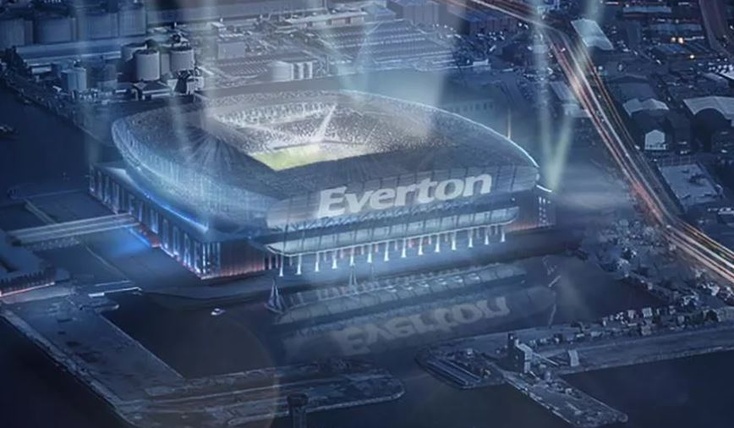
The major claim to fame of Evertonians, given the club’s relative lack of success over the years, is that Everton Football Club are responsible for building all three stadiums in the city. They played in Anfield until 1892, at which point the rent being asked by the owner became too much and they left, building a new ground on the other side of Stanley Park that they named Goodison Park. When Goodison Park began to be too tired and too expensive to modernise, a decision was taken to build another ground, this time down by the River Mersey. The construction at Bramley-Moore Dock was not without its problems, not least because the dock itself had to be filled before any building work could even begin. The stadium, located on the site of the former commercial dock, is designed to be part of a mixed-used development in the area.
On top the ground itself, there is also shopping, housing and the likes of a gym. Just as Tottenham fans have one over on Arsenal fans thanks to the Tottenham Hotspur Stadium being chosen as a Euro 2028 venue instead of the Emirates and Manchester City fans can rejoice at the Etihad being used rather than Old Trafford, so too can Everton supporters crow that their ground will welcome European Championship games whilst Anfield won’t. That is because the pitch at Anfield doesn’t have dimensions that satisfy UEFA’s needs for European internationals. Liverpool fans, of course, tend to be happy enough with welcoming the likes of Champions League games to their home ground instead. Constructed of steel and glass, the Everton Stadium has followed Spurs’ lead in having a large single stand like the Westfalenstadion in Germany.
St James’ Park – Newcastle

Newcastle United were not the first football club play games at St James’ Park, with that honour going to Newcastle Rangers. They played at the location in 1880, with Newcastle East End taking over six years later. The they were wound up in 1892, they effectively merged with Newcastle East End, who took over the lease. They then became Newcastle United, who have called the stadium their home ever since. Ask anyone about the club’s colours and they will tell you that they play in black and white, hence the nickname of ‘the Magpies’. Prior to 1904, however, the club actually played in red and white, whilst in the wake of the club being de facto taken over by Saudi Arabia, they began playing in Green and white during away games. The club’s stadium has been developed and changed numerous times over the years, expanding where possible.
More expansions and alterations might have been carried out, if not for the fact that local residents generally objected to that time and again. These objections have often led to threats of the club moving to a different location, but they remain at St James’ Park to this day. It is a stadium that dominates the city, being visible from almost anywhere thanks to its elevated location. Unlike many of the venues being used for Euro 2028, St James’ Park is one of the only ones that hasn’t been used for the likes of cup finals or other major competitions. The main exception to this was when it hosted three games during Euro ’96, meaning that it has at least had some experience of hosting the European Championship. It was also used to host football matches when London hosted the Olympics in 2012, and Saudi Arabian games after the takeover by PIF.
Hampden Park – Glasgow
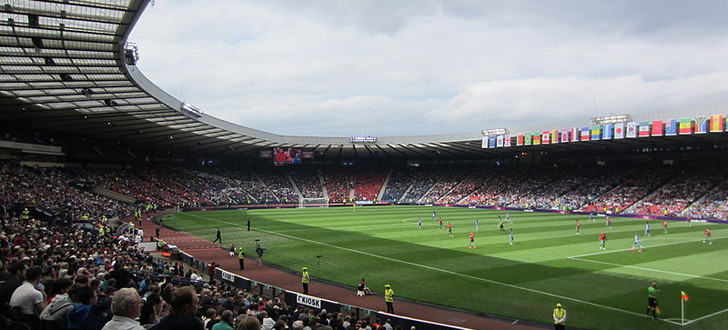
Scotland is a city with numerous impressive sports stadia, of which Hampden Park is the one that is used for major football matches. As well as being where the Scottish national side plays its games and has done since 1906, the fact that it had a Category 4 rating from UEFA means that it has been able to host the competition’s big cup finals. In 1960, for example, more than 127,000 people turned up to watch Real Madrid play Eintracht Frankfurt in the final of the European Cup. It has hosted two more finals in that competition since then, as well as Cup Winners’ Cup finals and the final of the UEFA Cup. As with many of the stadiums on this list, it was used as one of the host venues for the football when London hosted the Summer Olympics in 2012. It played host to the Commonwealth Games in 2014, including the closing ceremony.
In 2020, Scotland was one of 11 host countries chosen to host matches during the pan-European Euro 2020 tournament, meaning that it has seen some games from the competition before. One of the most impressive things about Hampden Park is that it still holds the record for attendance of a football game in Europe thanks to the fact that 149,547 people crammed into the ground on the 17th of April 1937 in order to watch Scotland play England. It is fair to say that there will be fewer people hosted during Euro 2028 and in safer conditions. As well as being where the Scotland national team plays games, Hampden Park has also been the temporary home of both Celtic and Rangers at one point or another, along with Queen’s Park. The latter have an average attendance of less than 600, making it an amusing place for their games to be played.
Aviva Stadium – Dublin
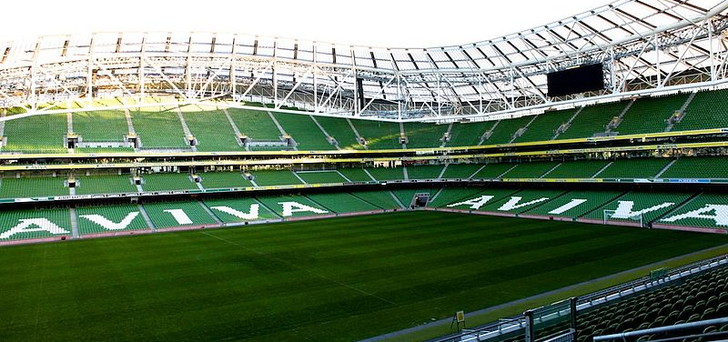
The fact that the Aviva Stadium, which will almost certainly be known as either Lansdowne Road or the Dublin Arena during Euro 2028 because of UEFA’s rules around sponsored names, is owned jointly by the Irish Rugby Football Union and the Football Association of Ireland tells a story about the venue’s multi-purpose nature. It stands on the site of the former Lansdowne Road Stadium, which was demolished in 2007, being locate close to Lansdowne Road Railway Station for ease of access. It is the only UEFA Category 4 stadium in Ireland, allowing it to host the Europa League final in both 2011 and 2024. In 2011 it hosted the Nations Cup between the Republic of Ireland, Northern Ireland, Scotland and Wales. In other words, it knows exactly what needs to be done in order to welcome tens of thousands of fans from out of the area.
The European Championship in 2028 won’t be the first time that thousands of people have descended on the venue in the hope of learning the outcome of something, given the fact that it was used by the Irish Army to do Covid tests during the pandemic. It has also hosted international matches for both the Irish rugby team and the Irish football team, with the former seeing Six Nations games played there. Since 2010, the Aviva Stadium has been used to host the FAI Cup Final, whilst some American football games have been hosted in it over the years. 2010 is also the year that Lansdowne Football Club moved into the stadium, having previous called the former Lansdowne Road Stadium their home jointly with the rugby union side Wanderers. Leinster Rugby have also used the ground for their matches since it first opened its doors.
Villa Park – Birmingham
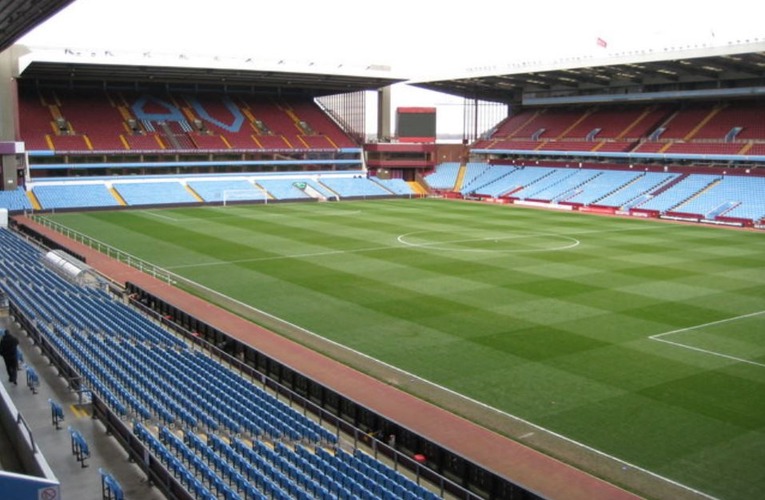
Based on the outskirts of Birmingham, the location of Villa Park was once an amusement park in the Victorian era. It also boasted an aquarium and a great hall, eventually being converted into a sports ground in 1889. That was for cycling and athletics events, before the Aston Villa committee reached an agreement to make it the club’s home in 1894. The design of the football stadium was largely thanks to the Villa Chairman at the time, Frederick Rinder, who was a trained surveyor. It was late opening, seeing a friendly played against Blackburn Rovers before it had been completed. As you can imagine, there have been numerous changes and alterations to the ground made since it first opened, largely thanks to the need to keep up with other football grounds that have opened up and down the country over the years.
The stadium knows how to host important matches, having regularly been a neutral venue for the FA Cup semi-finals prior to the opening of the ‘New Wembley’. It was the first English ground to host international football in three different centuries, so it is no stranger to major international competition. In fact, it was used during both the 1966 World Cup and the 1996 European Championship, two this very competition has taken place there. Interestingly, Villa Park has also hosted two first-class cricket matches over the years, including an England XI versus Australia in 1884. As well as hosting rugby matches and other sports, the venue has also played host to numerous different musicians, inclining Bruce Springsteen and Rod Stewart. Maternity clinics were hosted at Villa Park by midwives during the Covid pandemic, helping to alleviate the fears of parents.
Casement Park – Belfast

The full name of the venue is Roger Casement Park, named after the Irish revolutionary Roger Casement who was executed in 1916 after taking part in the Easter Rising. In fact, its choice as a venue over Windsor Park led to protests from Unionists. The problem is that Windsor Park’s capacity isn’t big enough to cope with the demands of UEFA when it comes to the European Championship. As a result, it was thought that redeveloping Casement Park made the most sense, even though Windsor Park is located in a unionist area and Casement Park is in a nationalist one. Traditionally used for hurling and Gaelic football, it was closed in 2013 and was effectively derelict by 2021. Planning permission for its redevelopment was granted in 2021, although nothing had actually happened two years later in terms of beginning the necessary improvements.
In the March of 2024, some of the demolition work on the stadium had begun, with the venue having been confirmed as being one of the places chosen to host games for Euro 2028. It will be one of the smaller grounds used during the competition, but the overall area will at least be used to seeing thousands of people descend on it in order to watch a sporting occasion. Prior to it closing in 2013, it was the principal stadium in Belfast for Gaelic Games. The first sporting event to take place at the stadium was in 1953, which was when the Armagh Harps defeated St John’s of Antrim in the Ulster Senior Club Football Championship inaugural match. Perhaps unsurprisingly, its location meant that it witnessed its fair share of problems during the Troubles. To date, it has hosted eight Ulster football finals, though none since 1971.
How To Get To Euro 2028 in UK & Ireland

The United Kingdom and Ireland are, well, islands. As a result, you will need to find methods of transport that can take you over the waters that surround them in order to enjoy your time watching Euro ‘28. The most obvious method from pretty much anywhere in the world is to fly, with major airports either in or close to all of the host cities. If you want to see a match being played at Everton Stadium, for example, then you can fly into Liverpool John Lennon Airport, whilst a match at the Aviva Stadium can be reached by flying into Dublin. Once you’re on the British mainland you’ll be able to reach all stadiums bar two by car.
If you’re not the sort of person that likes to fly then you will have the opportunity to take a boat trip from the European mainland over to the United Kingom, or from the UK to the island of Ireland. If you’re planning on leaving Europe then you might want to at least think about the benefit of the EuroStar, which allows you to travel from Paris and other cities straight into the heart of London. As mentioned, car will be a good way to get around once you’re on the mainland, but do bear in mind that parking might be tricky. Train travel will obviously be the most convenient way to get around, but it is stupidly expensive in the UK.
Tournament Format
Previous Qualification Formats
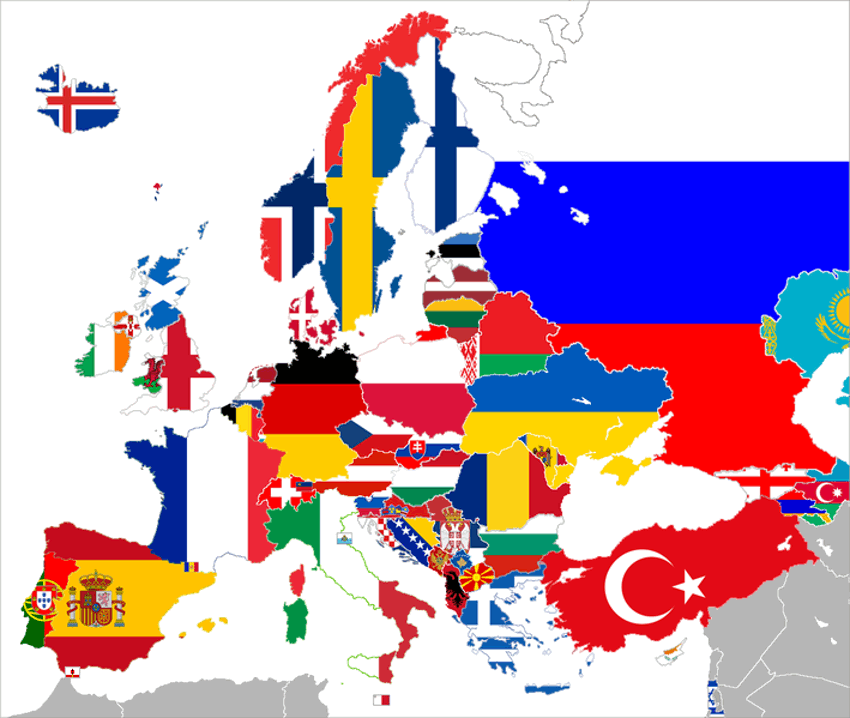
The initial tournament from 1958 to 1960 involved 17 teams that subsequently went through a knockout to find four teams that then competed in the finals. Back then the country that would host the finals had to be one of the 4 qualifiers, for the initial championships Paris was selected. For the 1964 tournament in Spain the number of entrants increased to 29 but the format of having a knockout followed by 4 finalists remained. In 1968 a group stage was introduced for qualification, there were 8 groups of 4 and the winner of each group would progress to a quarter final, the 4 winners of the quarters would progress to the finals. This format continued until 1980 when the competition was expanded to include 8 teams in the finals.
From 1980 onwards the country that would host the finals was decided in advance with the host country given a bye to the finals. The groups were reduced to seven in order that 7 group winners could progress alongside the host nation.
The tournament expanded to 16 teams in 1996, this was also first and only European Championships hosted in England. This was also the first year that the term ‘Euro’ was used. Groups were again increased to 8 with the 8 winners and 6 highest runners up qualifying for the finals and the two worst runner up competing in a playoff to make up the final place.
Since 1996 the format has changed for each subsequent championship. In 2000 the number of groups increased to 9, the winners automatically qualified along with the best second placed team. The remaining 8 teams competed in a playoff to make up the final 4 places (plus two hosts Belgium and Holland). Qualification for the 2004 tournament saw the winners of 10 qualification groups with all second place teams competing in a playoff for the remaining 5 places. In 2008 this switched back to 7 groups with the top two teams in each qualifying along with the two hosts. Then in 2012 the system switched back to a similar style to 2000 with 9 groups, 9 winners, the bet runner up and a playoff between the remaining 8.
Euro 2016 was the first tournament to be held since the decision to expand to 24 teams after 51 UEFA members voted in Michael Platini’s new structure. The hosts (France) qualified automatically with the remaining 23 places made up from the winners and runners up from 9 groups, the best third placed team and with the remaining 8 third placed teams competing in a playoff for the remaining 4 places.
As Euro 2020 was a pan-European tournament there was no automatic place given to a host, therefore all 24 teams qualified through the groups and the Nations League. There were 10 qualification groups for Euro 2020 with both winners and runners up qualifying automatically. The remaining 4 places were then allocated to the UEFA Nations League. Each league (A, B, C and D) was given one place, the highest four teams in each division (that haven’t already qualified through the groups) then competed in a play off system for the remaining 4 places. Over-complicated, perhaps?
With Euro 2024 having reverted back to a single host it meant Germany automatically qualified. For 2028 there are five host nations, however, and UEFA are yet to decide how they will handle the host spots. It may be all hosts automatically qualify, taking five spots, or all may have to go through qualifying, giving 24 open places but with two places reserved for any hosts that don’t qualify. Should more than two not qualify automatically those two places would be given to the two best performing teams – that could possibly mean one of the host nations doesn’t get to play.
This means anywhere from 16-21 places will again be available through qualification groups with 3 places awarded to the Nations League.
European Championship Finals Format
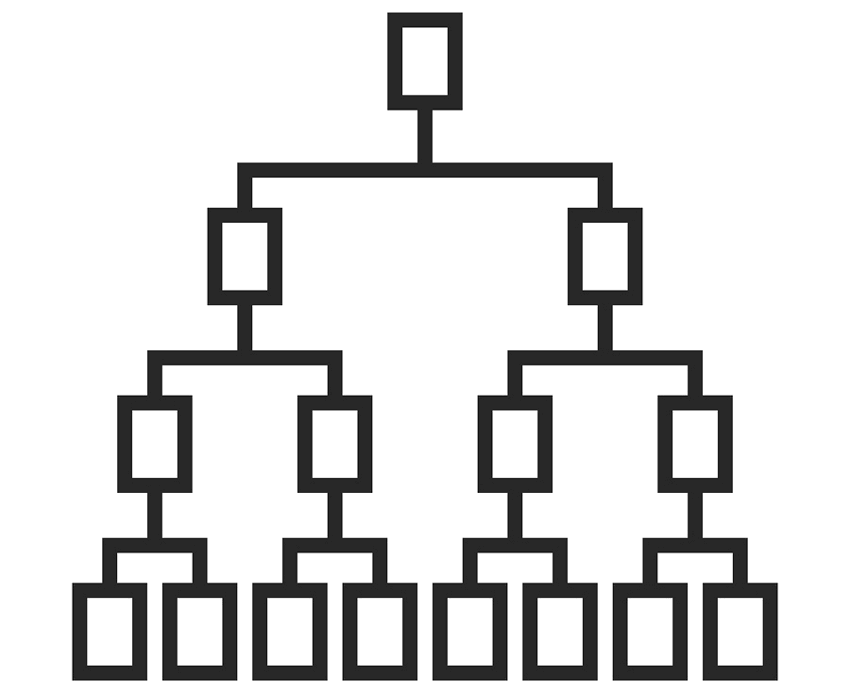
The European Championship Finals was initially a simple knock out system where the 4 finalists competed in a semi-final and then a final. In 1980 when the number of finalists was doubled to 8 a group stage was added. Two groups of 4 competed, the winners went on to contest the final and the runners up played for third place.
In 1984 the format changed with the top two in each group competing in a semi-final and the third place playoff abolished.
In 1996 the number of groups increased to 4 to accommodate the now 16 finalists.
The top two from each group progressing to a quarter final stage. This system remained in place until Euro 2016 where the addition of a further 8 teams has allowed for a round of 16 for the first time. The top two in each of now 6 groups progress directly. The remaining 4 places are made up of the four highest 3rd place finishers. The competition then progresses as a normal knockout tournament until the final.
Extra Time, Penalties and Golden Goals
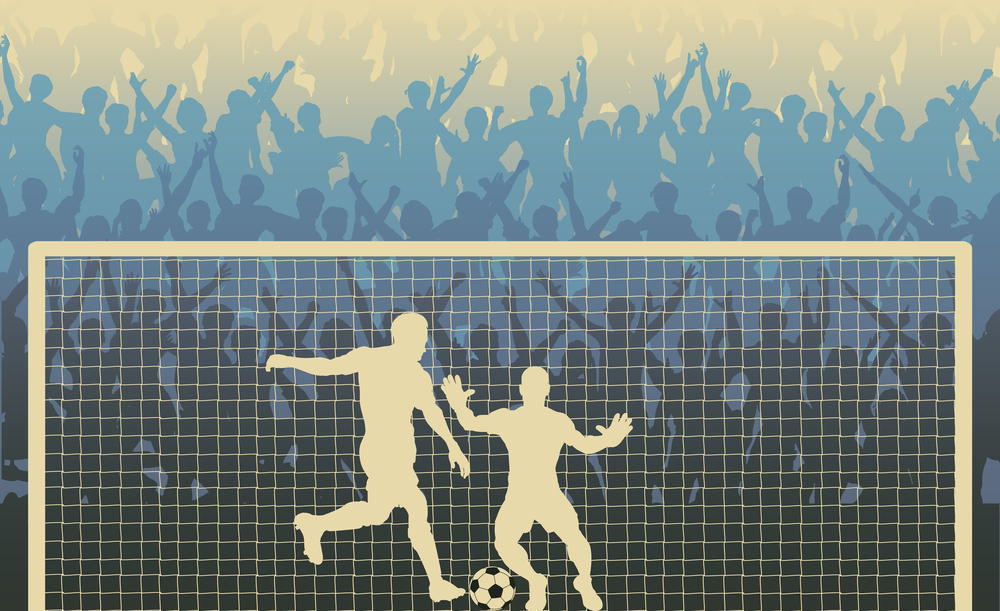
Prior to 1976 if the game was a draw after extra time the match went to a replay. This happened once in 1968, following a 1-1 draw Italy beat Yugoslavia 2-0 in the replay. The first penalty shoot out in a Euro final saw Czechoslovakia beat West Germany 5-3 following a 2-2 draw in Yugoslavia. From 1976 until 1992 this format remained unchanged until one day someone in UEFA (probably someone who knows nothing about football) decided to create the golden goal system for the 1996 European Championships in England. Germany won Euro 1996 2-1 with a golden goal in extra time, a golden goal means the match simply stops with a winner immediately declared, with the remainder of extra time is forfeited.
For the 2004 tournament the golden goal was replaced by the silver goal. This meant if there was a goal in the first half of extra time the match would still continue but only until half time of extra time. If there was a goal in the second half of extra time then the game continued to the end as normal. Greece knocked out the Czech Republic on the way to the 2004 final through this method.
In a victory for football fans everywhere after some considerable pressure from supporters, FIFA and UEFA decided to remove both golden and silver goals after the 2004 championships. From now on if you team goes to extra time they play the full half hour, if a result is still not reached the game goes to penalties.
Previous Winners
| Year | Host | Final | Result | Stadium | ||
|---|---|---|---|---|---|---|
| 2028 | UK & Ireland |  | v |  | ? | Wembley |
| 2024 | Germany |  Spain Spain | v |  England England | 2-1 | Olympiastadion |
| 2020 (2021) | Pan Europe |  Italy Italy | v |  England England | 1-1 AET 3-2 PS | Wembley |
| 2016 | France |  Portugal Portugal | v |  France France | 1-0 AET | Stade De France |
| 2012 | Poland & Ukraine |  Spain Spain | v |  Italy Italy | 4-0 | Olimpiyskiy National |
| 2008 | Austria & Switzerland |  Spain Spain | v |  Germany Germany | 1-0 | Ernst-Happel-Stadion |
| 2004 | Portugal |  Greece Greece | v |  Portugal Portugal | 1-0 | Estádio da Luz |
| 2000 | Belgium & Holland |  France France | v |  Italy Italy | 2-1 AET | Feijenoord Stadion |
| 1996 | England |  Germany Germany | v |  Czech R Czech R | 2-1 AET | Wembley |
| 1992 | Sweden |  Denmark Denmark | v |  Germany Germany | 2-0 | Ullevi |
| 1988 | W. Germany |  Holland Holland | v |  USSR USSR | 2-0 | Olympiastadion |
| 1984 | France |  France France | v |  Spain Spain | 2-0 | Parc des Princes |
| 1980 | Italy |  Germany Germany | v |  Belgium Belgium | 2-1 | Stadio Olimpico |
| 1976 | Yugoslavia |  Czech Czech | v |  Germany Germany | 2-2 AET 5-3 PS | Stadion FK Crvena Zvezda |
| 1972 | Belgium |  Germany Germany | v |  USSR USSR | 3-0 | Heysel Stadium |
| 1968 | Italy |  Italy Italy | v |  Y'slavia Y'slavia | 1-1 (2-0 Replay) | Stadio Olimpico |
| 1964 | Spain |  Spain Spain | v |  USSR USSR | 2-1 | Bernabéu |
| 1960 | France |  USSR USSR | v |  Y'slavia Y'slavia | 2-1 AET | Parc des Princes |
KEY: AET - After Extra Time, PS - Penalty Shoot Out, R - Replay
Home Nation Results
Finals
| Country | Apps | Games | Wins | Draws | Loses | Highest | Goals F | Goals A | Hosted |
|---|---|---|---|---|---|---|---|---|---|
 England England | 11 | 45 | 18 | 16 | 11 | Final (Runner-Up) | 59 | 43 | 2 |
 Wales Wales | 2 | 10 | 5 | 1 | 4 | Semi-Final | 13 | 12 | 0 |
 Scotland Scotland | 4 | 12 | 2 | 3 | 7 | Round 1 / Group | 7 | 17 | 0 |
 N. Ireland N. Ireland | 1 | 4 | 1 | 0 | 3 | Last 16 | 2 | 3 | 0 |
Qualification
| Country | Apps | Games | Wins | Draws | Loses | Qualifications | F | A |
|---|---|---|---|---|---|---|---|---|
 England England | 16 | 116 | 79 | 26 | 11 | 10# | 270 | 68 |
 Wales Wales | 16 | 120 | 48 | 26 | 46 | 2 | 145 | 149 |
 Scotland Scotland | 15 | 130 | 62 | 30 | 38 | 4 | 200 | 147 |
 N. Ireland N. Ireland | 16 | 130 | 47 | 27 | 56 | 1 | 140 | 167 |
# England have qualified for 10 tournaments but appeared in 11 thanks to automatic qualification as hosts in 1996.
European Championship Stats
European Championships key facts, trivia, records and statistics.
| Tournament Stats | |
|---|---|
| Most Goals | 142 (2020) |
| Least Goals | 7 (1968) |
| Most Individual Scorers | 80 (2020) |
| Most Goals/Game | 4.75 (1976) |
| Least Goals/Game | 1.4 (1968) |
| Highest Attendance | 79,115 (Bernabeu - USSR v Spain 1964) |
| Lowest Attendance | 3,869 (Nou Camo, Hungary v Denmark 1964) |
| Attendance Total | 2,681,288 (2024) |
| Team / Country Stats | |
|---|---|
| Most Championships | Spain (4), Germany (3), France (2) |
| Finals | Germany (6), Spain (5) |
| Runners Up | Germany (3), USSR (3) |
| Semi-Finalists | Germany (9), Russia (6) |
| Most Hosted | France (3) |
| Most Appearances | Germany (14) |
| Consecutive Winners | Spain (2008 – 2012) |
| Most Matches | Germany (58) |
| Most Wins | Germany (30) |
| Most Loses | Denmark (18) |
| Most Draws | Italy (19) |
| Goals Scored | Germany (89) |
| Goals Conceded | Germany (59) |
| Highest Goal Ave | Netherlands (1.67/game) |
| Lowest Goal Ave | Norway, Finland, Latvia (0.33/game) |
| Consecutive Qualifications | Germany (14) |
| Penalty Shoot Outs | Italy (7) |
| Player Stats | |
|---|---|
| Top Scorer (Single Finals) | Michel Platini (9 – 1984) |
| Top Scorer (All Finals) | Christiano Ronaldo (14) |
| Top Scorer (Qualification) | Christiano Ronaldo (41) |
| Top Scorer (Total) | Christiano Ronaldo (55) |
| Fastest Goal | Nedim Bajrami (23 seconds 2024) |
| Most Medals | Rainer Bonhof (3 – Germany) |
| Most Appearances (Finals) | Christiano Ronaldo (30 - 2639 minutes) |
| Youngest Appearance | Lamine Yamal (16yrs 338days) |
| Oldest Appearance | Pepe (41yrs 130days) |
| Youngest Goalscorer | Lamine Yamal (16yrs 362days) |
| Oldest Goalscorer | Luka Modrić (38yrs 289days) |
About the European Championship
The European Nations Cup
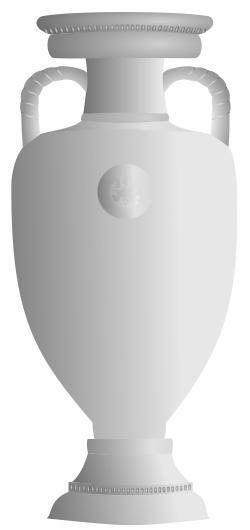
The European Championships was a late comer to the party with other continental competitions in full swing well before the Euros.
It is often cited that the devastating effect of the second world war in Europe was the principle reason for a lack of appetite in the 15 years following the declaration of peace in 1945.
If anyone was ever going to propose an inclusive European tournament it had to be the French.
In 1927 the French Football Federation secretary general, Henri Delaunay, proposed the initial idea for a Europe-wide football tournament.
In conjunction with Hugo Meisl he submitted plans to FIFA for a tournament to run concurrently with the World Cup.
Unfortunately, due to political tensions, it took until 1958, three years after Delaunay died, for the idea to come about. The trophy was subsequently named after Delaunay’s in his honour.
It was in fact the French newspaper L’Equipe that re-proposed the idea in 1954 and with support form Henri Delaunay’s grandson, Pierre, a drive towards a European Nations Cup was created.
Pierre became secretary to the organising committee for the competition in 1955 and later that year the European Nations Cup format was agreed.
1960 – The First European Championship
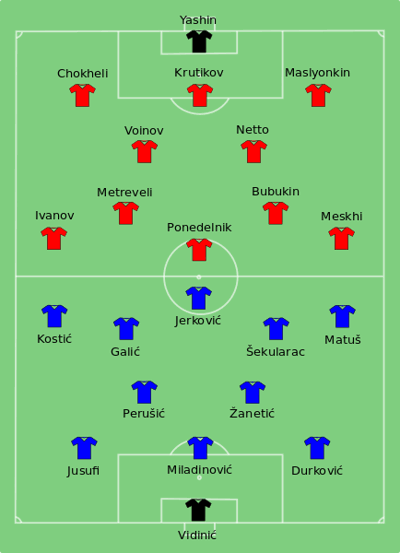
The first European Nations Cup saw 17 members (around half of the total members) join in 1958. Notably England, Italy, Holland and West Germany did not compete.
The first ever match to take place under the umbrella of the new tournament was a playoff match between the Republic of Ireland and Czechoslovakia who were drawn through lots, Czechoslovakia won.
The first match proper took place between the Soviet Union and Hungary, the USSR winning 3-1. Over 100,000 people turned out for the game that saw Anatoli Ilyin become the first ever scorer in the completion in the Tsentralni Lenin Stadium in Moscow. The Soviet Union won the second leg 1-0 to progress.
The first competition took place over 22 months from 1958 to 1960 with the 16 teams competing in knock out matches. Following their initial victory over Hungary the Soviet Union team were refused access to Spain by the dictator General Franco, this gave them a bye directly to the finals. The remaining 4 teams left were France, Soviet Union, Yugoslavia and Czechoslovakia. France was selected as the initial hosts, probably due to the huge role the French had played in creating the competition in the first place.
France were eliminated by Yugoslavia 5-4 and to this day this remains the highest scoring game in the championships. Yugoslavia played the USSR in the final in Paris on July 10th 1960, despite being dominated for most of the game it was the USSR that came out victors winning 2-1 after extra time.
1960 to 1980
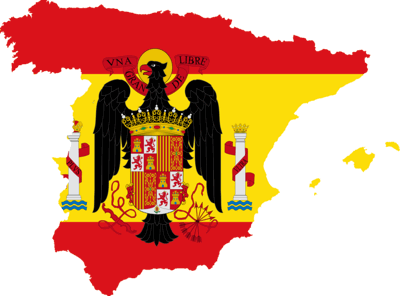
In 1964 from the four remaining finalists Spain were selected by the hosts. They played the 1960 winners, the Soviet Union, winning 2-1 with Hungary and Denmark competing for third place.
In 1968 he tournament was again won by the hosts, Italy, who beat Yugoslavia on a reply. The match was a 1-1 draw after 90 minutes and prior to the advent penalties it was forced to a second game that the Italians won 2-0.
Belgium hosted in 1972 with West Germany coming out as victors in 3-0 win over the Soviet Union at Heysel in Brussels, pretty much the same German team that win the world cup two years later in 1974.
The last competition in which only four teams competed took place in Yugoslavia in 1976, this was also the last tournament until 2020 where the hosts were required to qualify.
Czechoslovakia this time beat West Germany in the newly designed penalty shootout, the game was 2-2 after extra time with the Czech’s winning 5-3 on pens.
1980-1996
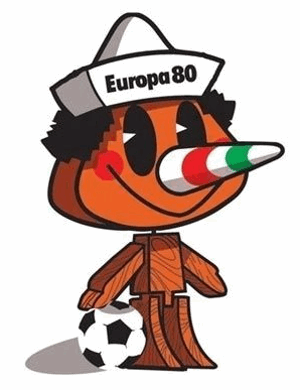
For the first time the host, Italy, was pre-selected and did not have to qualify. West Germany won their second title beating Belgium in the final in the Stadio Olympico in Rome 2-1.
France were hosts in 1984 and won the tournament for a second time, Michael Platini, later UEFA president, scored 9 goals in 5 games, this included the first goal in the final as France beat Spain 2-0.
The Netherlands won the 1988 competition beating hosts West Germany in the semi-finals and the USSR in the final 2-0.
1992 was the last competition with 8 teams. Yugoslavia could not compete despite qualiftying due to the ongoing war in the region. Denmark took the place of Yugoslavia in the tournament hosted by Sweden.
The Danes won the competition beating the current holders, the Netherlands, in the semi-finals and the newly unified Germany in the final 2-0.
1996-2012
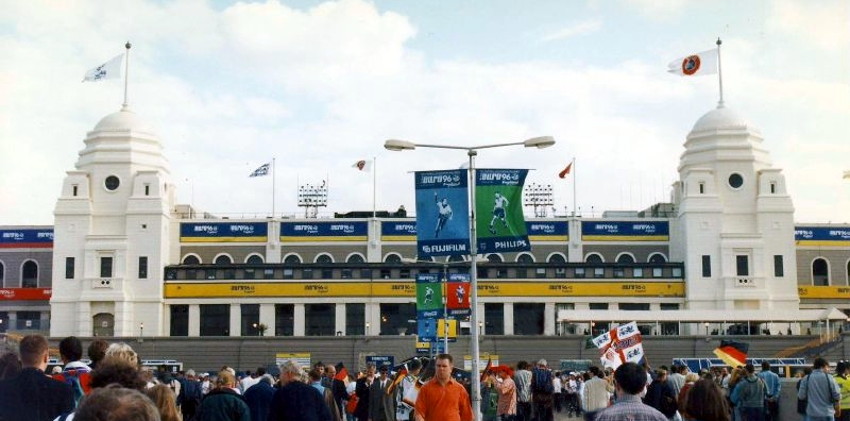
The 1996 European Championships were hosted by England with the finals expanded to 16 teams, it was also the first time the term Euro was used to describe the tournament. Now the winners and runners up from 4 groups moved to a quarter final knockout stage. This format remained in place up to an including 2012.
England were knocked out in the semi-finals by Germany on penalties in the semi-finals, the Germans went on to beat the Czech Republic in the final 2-1 winning the trophy for a third time. This was also the first occasion in which the golden goal was used to decide the winner.
Euro 2000 was the first to be hosted by two countries, Belgium and the Netherlands. The then world cup holders France went on to win beating Italy in a heated final 2-1. Euro 2004 saw one of the biggest upsets yet when Greece beat the hosts Portugal 1-0 in the final. They were 150/1 before the start of the championships.
Euro 2008 and Euro 2012 were again co-hosted by Austria and Switzerland and Poland and Ukraine respectively. The 2008 final was won by Spain who outclassed all opponents along the way beating Germany 1-0. The 2012 final was again won by Spain who beat Italy 4-0. Spain also won the World Cup in the intervening years to become the only team defend a European title and also the only team to win three international major tournaments back to back.
Euro 2016
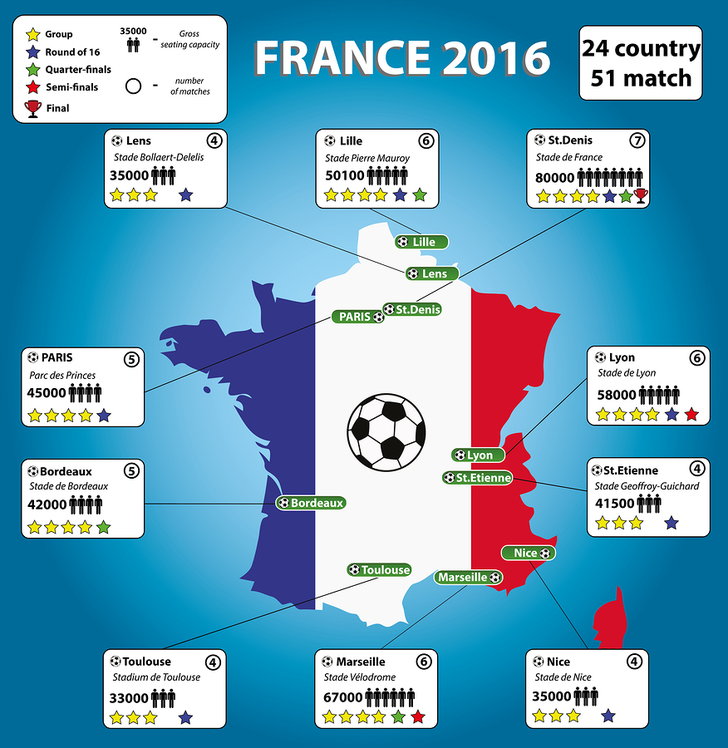
The last incarnation of the European Championships saw the number of finalists increase to 24 with the addition of a new round of 16 at the knock-out stage.
The finals were held in France for the third time although this could be the last finals to be hosted by a single nation as Euro 2021 will be held across several European cities.
Tournament favourites and largely the best team France were beaten in the final 1-0 after extra time by Portugal, the Portuguese only managed one win in 90 minutes in the entire tournament.
Despite finishing third in their group with three draws, the easiest group as well, Portugal went on to win the tournament for the first time in their history.
The final in 2016 was a perfect contrast to the 2004 final where it was Portugal, the tournaments best team, who were beaten by a dogged and resistant Greece side. Euro 2016 stadium guides, statistics and fixtures can be found in our Euro 2016 archive.
Euro 2020 (2021)
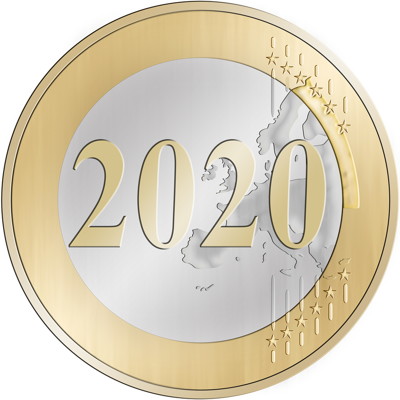
Euro 2020 will always have an asterisk next to it thanks to the fact it is called Euro 2020 but was held in 2021. The tournament was delayed by a year due to the outbreak of coronavirus that spread through Europe in 2020, the tournament was not, however, renamed as UEFA and the sponsors had already done the branding and made all the merchandise.
Whatever you call it it will be remembered because it was different, played in front of reduced crowds with travel restrictions in place for many fans. It will not live long in the memory just because it was delayed either, it was also the first tournament to have no fixed host, instead played in 11 different cities across the continent. In fact, it should have been 12 cities by Dublin had to withdraw due to restrictions in place at the time due to coronavirus.
Euro 2020 produced some really high quality football matches, much better than seen 5 years previously. This was evident by the fact that 142 goals were scored compared to 108 in 2016, there were also far fewer booking and refereeing was much better allowing free flowing games. Even VAR was good with a largely light touch approach that actually enhanced decision making for a change.
England went into the tournament as favourites and lived up to the billing by making it all the way to the final, although they did have a relatively easy run through and huge home advantage thanks to the fact 6 out of 7 of their matches were played at Wembley, including the final. It was Italy who went home with their second title though, beating England on penalties (predictably) following a 1-1 draw in normal time. Christiano Ronaldo was the golden boot winner with 5 goals, despite Portugal only making it to the last 16. He also became the record all time goalscorer with a record number of appearances.
Euro 2020 stadium guides, statistics and fixtures can be found in our Euro 2020 archive.
Euro 2024
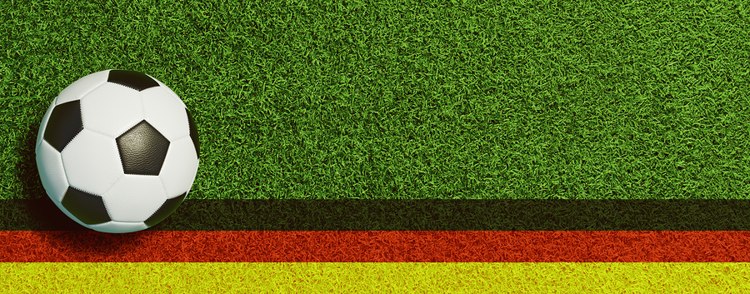
What was once the norm for the Euros, a single host country, is now a rarity since the tournament expanded along with hosting costs. It was, therefore, nice to have a single host country again in 2024 in Germany – one of the only nations rich enough to host solo.
The tournament didn’t produce as many goals as Euro 2020, 117 in total, but it produced a lot of exciting matches. In 57% of games both teams scored, for example, and a lot of records were set:
- Lamine Yamal became the youngest ever player to play, 16 years and 338 days, and the youngest ever goalscorer for Spain, 16 years and 362 days
- Pepe became the oldest player to play at the Euros with Portugal, 41 years 130 days
- Luka Modrić became the oldest goalscorer for Croatia, 38 years 289 days
- Nedim Bajrami scored the fastest goal, 23 seconds, for Albania
- Spain scored a record number of goals, 15, from a record number of players, 10
- Spain won the tournament without needing a penalty shootout, the first nation to do so
- Spain won a record fourth European Championship
- Turkey v Czech Republic produced more cards than any previous match, 19 in total made up of 17 yellow cards and 2 red cards
- Highest overall attendance in history to date with 2,681,288 people attending over the 51 matches giving an average of 52,574 per game
England, who again went into the tournament as favourites, reach the final for a second successive time. They were deservedly beaten 2-1 by Spain, though, who blew all others away with their style and determination. This included beating Germany in the quarter finals 2-1 after extra time, the only game Spain played that needed extra time to win. Germany were the only other team that looked like they could match Spain and it would have made a worthy final.
Instead England qualified from an easy group and definitely had the easier side of the draw. The first good team they played was Spain and as with so many previous tournaments this quickly showed England’s frailties as a team more scared of losing than wanting to win. The golden boot was shared between six players with three goals each following UEFA’s decision not to award it to one player in the event of a tie using metrics such as assists and minutes played. Euro 2024 stadium guides, statistics and fixtures can be found in our Euro 2024 archive.
Previous Tournaments
Euro 2024 Stadiums
England made it to the final again but to say they had an easy route would be an understatement. The only teams that looked like they could win it were hosts Germany and Spain and as Spain knocked out the Germans in the quarters it was there for the taking. England were poor but ground out results until they deservedly lost 2-1 to Spain in the final. Spain scored a record number of goals, 15, won every game without needing pens and produced the youngest player and scorer in Euros history, Lamine Yamal at just 16 years old.
Euro 2020 Stadiums
Despite being cancelled in 2020 due to coronavirus and moved to 2021 the tournament retained the name Euro 2020 due to branding. It was played across Europe in 11 different stadiums in 11 different cities. England an Italy reached the final and England yet again went away disappointed losing in a penalty shoot out. The tournament will mostly be remembered, though, for producing high quality football, lots of goals and with a very good standard of refereeing.
Euro 2016 Stadiums
Euro 2016 wasn’t the greatest championship by a long way for the football quality but it did smash the overall attendance record with just under 2.5 million people watching the 51 matches. The 2016 championship was the best yet for atmosphere and this owes a great deal to the ten great stadiums used to host the championships. Visit our Euro 2016 stadiums for a full list ofground guides and all the fixtures.
